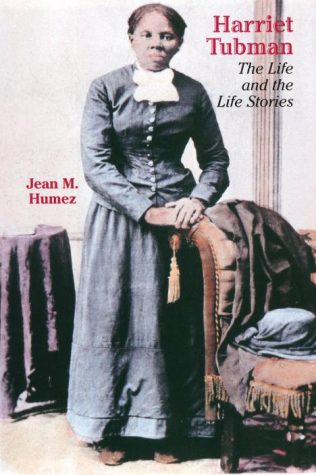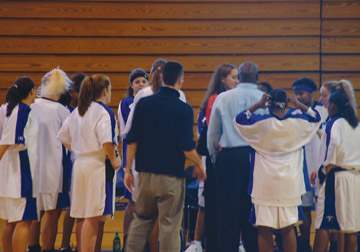Torke’s Talk: Adventures in Video
December 3, 2003
November 20, 2003, UMB faculty member Ann Torke came to share her perspectives on space, time, and their interaction in art. As an interdisciplinary artist who works with video, sculpture, and installation, she is concerned with space rather than “form as a response to space,” hence her focus on site-specific installations. She recently returned from a trip to Amsterdam where she participated in the Da Balie Museum’s “How far can you go in 24 hours”-themed exhibition.
“If you’re going to think of space, you can’t think of space without time and that’s why I picked video,” says Torke of her choice to work in visual media. It comes as no surprise that she teaches courses on introductory and advanced digital video in the studio arts track of the UMB Art Department.
Somehow Torke manages to make an unruly collage of photographs from an abandoned cemetery and shots of a burned out building cohesive, showing her unusual insight into the world. Her discussion was centered on explaining how her projects come together. “I tend to be exploring issues around identity, ambiguity, and contradictions. It tends to be a form of storytelling.”
Torke does her own narration in most of her work. “I organize most of the video around writing and the writing becomes voice-overs.”
This is the case in “Dime a Dozen,” which describes Torke living in Chicago with her partner Julie and their struggle to take in their neighbor Jeremiah as a foster child. Using 60s music interspersed with Atari game noises, she lays a somewhat eccentric framework for explaining to him why they couldn’t get a foster care license. To do so, she used toy dogs to imitate the actions occurring in the situation, detailing the “notion of home and how that has to do with the people in it.” Torke focused on the “space inside the monitor to incorporate different elements to tell the story so he [Jeremiah] could understand it.”
In another video, she shows how a five-alarm fire demolished seven three-deckers and displaced 100 people. Her film becomes the backdrop for five individuals’ stories. One tale is of a woman who ended up missing her train while traveling. When a man walking by tells her she can’t sleep in the station because it’s going to close she, thinking Europeans more hospitible than Americans, takes him up on his offer to let her stay at his place. She ends up running out in the middle of the night, barely escaping with her clothes and belongings from a near-rape, only to find that the station was open the whole time.
One of the most compelling pieces incorporates a set of china found in a ravine, which Torke came upon in a small cemetery she discovered while walking her dog. After researching its origins, she found that the graves, along with the dinnerware, came from a school for “wayward girls.” In other words, a home for anyone who displayed what could be considered deviant behavior around the turn of the century, such as teenage pregnancy or homosexuality. The land has since been bought and developed into a series of condos and the cemetery was fenced in and hidden by shrubs. It appears on no maps and is virtually forgotten. The graveyard holds inmates who died during their stay, all of whom were said to have “fall[en] on the third rail,” which seems somewhat suspect.
Her purpose in art is to search for the form that best expresses an idea or issue, and calls her work, “feminist with humor. I’m interested in making complex statements, not just one-liners.”






















































